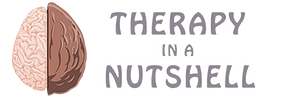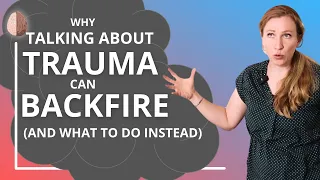What’s the difference between a panic attack, an anxiety attack, and panic disorder? This is important because people sometimes use these terms interchangeably, they both have a lot of overlapping symptoms, but the treatment for each of them is different.
So in this post, we’ll talk about the difference. In the next post, we’ll talk about the good and bad advice for treating them. And in the third post, we’ll talk about how to stop panic attacks from recurring.
Both panic attacks and anxiety attacks include a sense of fear and discomfort. During both of them, the fight/flight/freeze response triggers physical symptoms like a fast heartbeat, shortness of breath, tightness of throat, dizziness, nausea, sweating, dry mouth, shaking, etc.
So what’s the difference?
How the DSM-V Defines Anxiety Attacks, Panic Attacks, and Panic Disorder
Both panic attacks and anxiety attacks include a sense of fear and discomfort. During both of them, the fight/flight/freeze response triggers physical symptoms like a fast heartbeat, shortness of breath, tightness of throat, dizziness, nausea, sweating, dry mouth, shaking, etc.
So what’s the difference?
First, definitions vary because the DSM-V, the Diagnostic Manual of Mental Health Disorders, doesn’t define an anxiety attack. Anxiety is defined as a feeling of worry, physical discomfort, and fear.
Anxiety attacks usually come in anticipation of some event. You might have work stress or a family event or financial trouble or all three. And the stress becomes overwhelming. Anxiety builds over time until it reaches a breaking point. And while anxiety may build over hours or days, anxiety attacks usually last less than 30 minutes.
Now, panic attacks are defined in the DSM-V. Around one in three people will have at least one panic attack in their lifetime. And with panic attacks, a sense of overwhelming fear comes on suddenly. They are more like a balloon popping. There are two types of panic attacks: unexpected panic attacks, which seem to come out of nowhere, and expected panic attacks, which come in response to some kind of phobia.
So for example, if you’re afraid of snakes and you suddenly come across one, that may trigger a panic attack. Panic attacks usually last less than 10 minutes, but panic disorder specifically includes one of three main symptoms: one, derealization – feeling numb, detached, or floaty; two, fear of a heart attack; or three, fear of hyperventilating and passing out.
Panic disorder happens when you have repeated panic attacks.
Now, it is even possible to experience both at the same time. For example, you may feel nervous about an upcoming exam, and as the stress builds into an anxiety attack, it may culminate in a panic attack during the test.
What to Do and What Not to Do
Both panic attacks and anxiety attacks are treatable. Decreasing overall stress, working with a therapist, exercise, sleep, relaxation, meditation, and breathing techniques, and also cutting alcohol and nicotine can all help. CBT techniques can help you learn to decrease panic and anxiety attacks, but treating anxiety attacks and panic attacks require different approaches.
So let’s talk about that.
If you google how to stop a panic attack, you might get really bad advice if you have chronic panic attacks. The articles all say to try to take some deep breaths, calm yourself down, distract yourself. Look, if you’ve tried this and it worked, you wouldn’t be here. So with a panic attack, and especially with panic disorder, this is the exact wrong advice. Let me explain.
An anxiety attack comes on gradually. It’s like a buildup of anxiety that overflows, like a bathtub that’s been filling up too long. So this means the treatment is all about slowly lowering the level of the water.
So if you’re overflowing with anxiety, these are the sort of things that gradually let the water drain: slowing down, calming your body, taking deep breaths, getting present, trying the 3/3/3 rule.
Get more organized and decrease your overall stress and set boundaries. Process the stress that you can’t decrease. Writing, practicing willingness, getting support, laughing, exercising. All of these techniques can help decrease overall anxiety and prevent both anxiety and panic attacks. And they may possibly help you calm down in the middle of a panic attack.
Now, panic attacks are a different beast altogether. If you’ve only ever had one panic attack or just a handful, you can try any of these previous techniques that you want. Give them a try. Just experiment and see if they work.
But if you get repeated panic attacks, then it’s likely that trying to make your panic attacks go away is actually causing recurring panic attacks. Because, you see, panic attacks are anxiety about anxiety. They are fear of fear.
There’s this Jimmy Fallon clip where they talk about something funny that they overheard.
This one’s from @Reggie Games. He says, “I once overheard a man in a stall next to me whisper to himself, “Please, not now.”
Now, Jimmy makes a great joke of it, but I can almost guarantee that it was someone in the bathroom trying to force a panic attack to not come on, because that’s the exact mindset that causes recurring panic attacks.
You start to feel some anxiety, and then your body starts to produce some stress chemicals, which triggers some uncomfortable sensations, like a faster heartbeat or an upset stomach. And you think, “Please, not now. I can’t have this panic attack now. This would be terrible.”
And the more you try to force your body to calm down, the more messages you send to your body that you’re in danger, that anxiety and panic is dangerous and must be stopped.
So in this situation, trying to calm down your body sends a message to your brain that the anxiety is actually dangerous and it must be avoided, which makes anxiety worse.
For people with panic attacks, trying to use deep breathing actually makes the problem worse. Anything you do to try to force a panic attack to go away makes them worse, and makes them come back again stronger the next time.
So when you google how to stop a panic attack and the advice is “Try to take deep breaths,” if you have recurring panic attacks, that is probably going to make you feel worse because it’s going to feed that cycle of panic attacks.
You can learn to calm down, but it’s a paradox because acceptance has to come before change, and the technique is a little bit paradoxical. So in the next post, we’re going to talk about how the panic cycle works. And in the last post, we’re going to go way in depth on how to stop recurring panic attacks.
Check out my Free Quick Start Guide to Anxiety below for more help.




